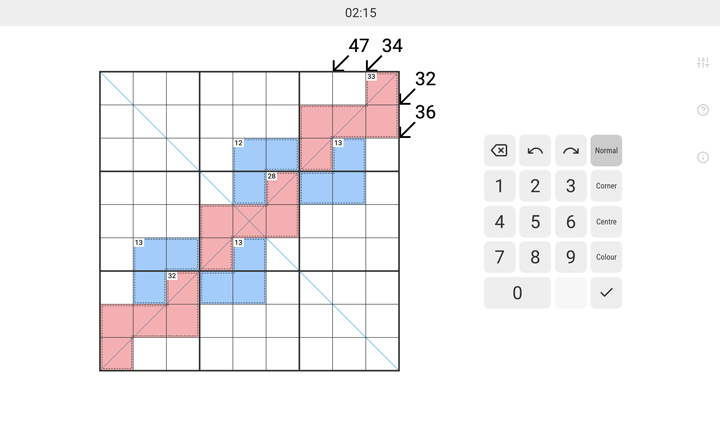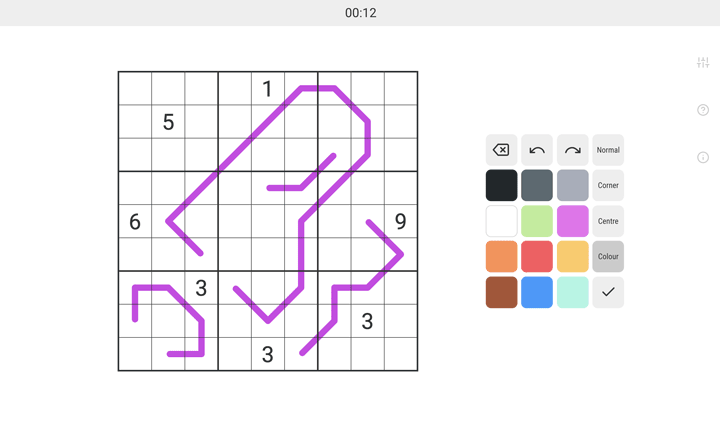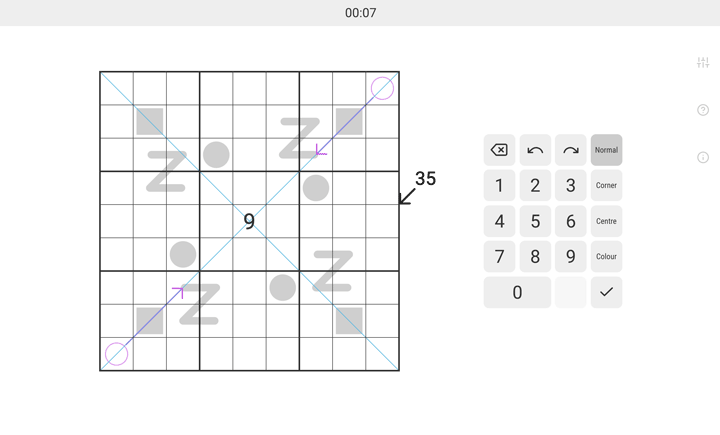Sudocle: A modern web app for Sudoku
I’m a huge Sudoku fan. Today, I’m releasing the first version of my new web app called Sudocle. The app has been inspired by Cracking the Cryptic, the world’s most popular YouTube channel about Sudoku and other logic puzzles, which I can highly recommend!
Sudocle offers the following features:
- Lightweight and clean look
- Optimised for various devices (mobile and desktop) as well as screens (any size and resolution)
- Configurable interface:
- Themes (including dark mode)
- Colour palettes (including one optimised for colour blindness)
- Custom colour palette
- Zoom
- Font sizes
- and other options
- Fully compatible with puzzles published by Cracking the Cryptic (see usage instructions below)
- High performance graphics renderer using WebGL or HTML Canvas
- Open-source (MIT license)
Using the online version
If you want to try Sudocle, I recommend using the online version, which is available at:
https://michelkraemer.com/sudocle
To play one of the puzzles featured on Cracking the Cryptic in Sudocle, just copy the puzzle’s ID from the CTC webapp and append it to the URL shown above.
For example, the “Miracle Sudoku” by Mitchell Lee, one of the most popular puzzles ever featured on the channel, has the following URL:
https://app.crackingthecryptic.com/sudoku/tjN9LtrrTL
This URL becomes:
https://michelkraemer.com/sudocle/tjN9LtrrTL
Screenshots
Here are some random screenshots (no spoilers!):

The Gordian Knot
by Joseph Nehme
Play in Sudocle
Watch video with rules

German Whispers
by Philipp Blume
Play in Sudocle
Watch video with rules

Blackjack
by apiyo
Play in Sudocle
Watch video with rules

Chaotic Wrogn
by Undar Beyond
Play in Sudocle
Watch video with rules
What does “Sudocle” mean?
The name Sudoku is an abbreviation of the Japanese expression “Sūji wa dokushin ni kagiru” (数字は独身に限る), which can be translated to “the digits must be single” [Wikipedia]. Sūji means digits.
A monocle, a binocle, or a pair of binoculars are things that help people see.
Sudocle therefore helps people see digits 🤓😉
Have fun!
If you have used Sudocle and have ideas, found bugs, or have any other feedback, I would be very happy to hear from you! Contact me, write a comment below, or open an issue.
You can find Sudocle’s source code on GitHub. Contributions are welcome!
Have fun solving puzzles with Sudocle!

Posted by Michel Krämer
on 7 March 2021
Next post
Executing cyclic scientific workflows in the cloud
Our paper has just been published in the journal of cloud computing. We present an approach for a cloud-based system executing scientific workflows whose structure may change during run time.
Previous post
Steep 5.7.0
I’ve just released a new version of my scientific workflow management system Steep. It introduces live process chain logs, improved VM management, and many other new features. This post summarises all changes.
Related posts
Build Scala projects with Eclipse Buckminster
Buckminster is a tool to build Eclipse RCP applications. It contains a lightweight Eclipse SDK and features but no means to build Scala projects yet. This post tries to bridge this gap.
Binary JSON with bson4jackson
This post introduces the open-source library bson4jackson, which is an extension to the Jackson JSON processor. It enables you to parse and generate documents in a binary JSON format called BSON.
ECMAScript 6/7 on the JVM with TypeScript and Vert.x
In this article, I describe how to use ES6 and ES7 features on the JVM with vertx-lang-typescript. The library extends Vert.x 3, so you can write your verticles in TypeScript.